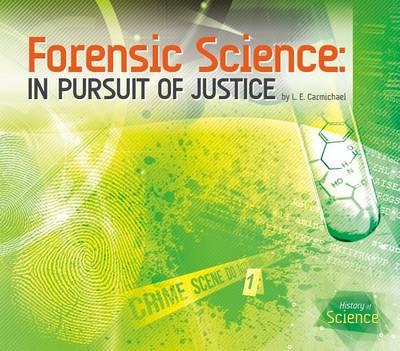A few weeks back, Jan Thornhill wrote a post about accuracy in the era of the Internet. It got me thinking about the biggest fact-checking challenge I ever encountered as a children's writer - and how glad I was that someone caught the problem before it made it into print. Here's the story.
The Industrial Revolution of the 19th century was responsible for more than just technological breakthroughs and the novels of Charles Dickens. It also caused a major spike in crime rates, as people moved from the countryside into the cities looking for work - and turned to crime when they couldn't find any.
Urbanization also made it harder to reliably identify repeat criminals. In small villages, everyone not only knew everyone, they knew with a high degree of certainty which of their neighbours was likely to blame for the local crime wave. Not so much in cities, where many people lived surrounded by strangers. Witness reports were often useless, because criminals wore masks or otherwise changed their appearances, and there was no such thing as photo ID. Many governments instituted harsher penalties for career criminals, but these penalties couldn't be applied without certainty that the suspect in custody was actually a repeat offender.
Enter Alphonse Bertillion. A file clerk with the Paris police, he was the fussy, meticulous son of a statistician, and he had a revolutionary idea. A criminal could change his hair cut or moustache or even his name, Bertillon believed, but he couldn't change his bones. Careful measurements of body dimensions, like the length of the finger or the long bone in the thigh, could be combined to produce a one-of-a kind profile - the first (Western) scientific basis for identifying human beings.
 The Paris police took a while to come around to this idea, but in its first year of use, Bertillon's system, called anthropometry, identified 300 career criminals. By 1888, it was implemented in all French police stations and quickly spread around the world.
The Paris police took a while to come around to this idea, but in its first year of use, Bertillon's system, called anthropometry, identified 300 career criminals. By 1888, it was implemented in all French police stations and quickly spread around the world.
Until 1903, when a man named Will West was taken to Leavenworth Prison in Kansas and identified based on his measurements as a repeat offender. But West swore he'd never set foot in the prison before. By a bizarre coincidence, West's measurements perfectly matched those of William West - a man already imprisoned in Leavenworth! While the men did, in fact, bear a strong resemblance to each other, their fingerprints were completely different. This incident was one of the reasons fingerprinting replaced anthropometry as the standard method of legal identification.
Or was it?
When I was researching Forensic Science: In Pursuit of Justice, I came across this story in not one, but several of my reference books. Since it appeared well-verified and was the perfect anecdote to explain how fingerprinting came to dominate criminal identification, I included it in the initial draft of Chapter 6. Imagine my shock when the content consultant* for the book told me the entire incident was a myth.
A myth.
As Simon A. Cole explains in his book Suspect Identities (a volume the consultant kindly referred me to), the West story was carefully fabricated and cleverly circulated as a means of promoting fingerprinting as a superior alternative to anthropometry. And while fingerprinting ultimately replaced Bertillon's method due to its numerous advantages, this incident was not one of them.
For mysterious reasons, I had more "fact" trouble while researching Forensic Science that with any of my other books (excepting maybe Fox Talk, because some of the science in that book is both new and controversial). I have no idea why this subject matter in particular was so affected by conflicting sources and legend-as-truth, but it just goes to show that fact checking is one of the most important steps in writing new nonfiction - especially for young audiences, who may not have the broader context needed to be critical of what they read.
What about you? Do you have a favourite fact that turned out not to be true?
Calling all Nova Scotian kids' book lovers! I, and many other amazing local authors, will be signing at the Celebrating Children's Literacy Book Fair. It's on Saturday, April 23, from 8:30-1:30pm, on the NSCC Kingstec Campus in Kentville. Come out and see us!
--
* Content consultants are experts that review my books before publication - they help me ensure that no errors make it into the final draft.
No comments:
Post a Comment